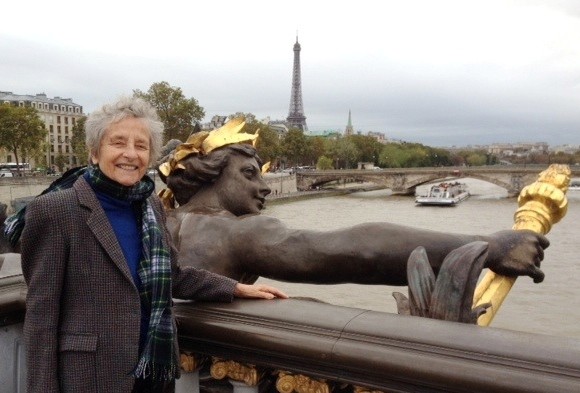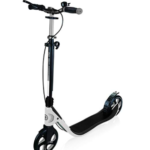
Paris is waging a war on wheels.
In order to survive crossing the street, pedestrians have to defy car drivers while on the sidewalks, the war is between the people who walk and those on wheels in a multitude of forms.
Mayor Anne Hidalgo, a socialist, has made it her mission to reduce pollution in the French capital by shrinking the space open to vehicles. It is a laudable cause and many Parisians appreciate its immediate results.
Thanks to the closing of the roadways along the Seine, people have regained the previously lost pleasure of walking leisurely near the water, away from the noise of the traffic, while their children can play freely.
It is possible now to walk miles and discover Paris from east to west. More boats line up at the quays and have become floating cafés. In warm weather, tons of sand and palm trees appear overnight to give the berges (banks) de la Seine a summery look.
But the process of narrowing avenues with larger sidewalks and creating bicycle and bus lanes can be overwhelming for residents. For months, the ambitious project to reduce the Bastille circle to merely an intersection of avenues has turned the area into a gigantic worksite.
People have to struggle through ever-changing makeshift paths amid the noise and dust of heavy equipment that is variously moving mountains of dirt or asphalt, installing fire hydrants and electrical cables, and relocating bus stops. Everyday the urban landscape changes causing irritation among Parisians and resultant excessive horn-blowing.
For pedestrians, crossing a street feels like an obstacle course. When the lights change, motorcycles seem to think they are at the Le Mans 24 hour race (the most famous car race in France), backfire their engine to make as much noise as possible and surge forward riding only on their back wheel. Pedestrians had better get out of the way!
Arriving at a traffic light, drivers will not stop until it turns to amber. The crossing space, called les clous in France (it used to be-marked by what looked like oversize thumbtacks), is encumbered with trucks, cars and busses through which one has to meander to find a passage.
Even when the light turns green, a war of nerves starts between drivers and pedestrians. Tourists and out-of-towners hesitate and are too polite. This is a big mistake, which is interpreted as an opportunity to move forward rapidly by drivers. But old-time Parisians are more daring and will bluff their adversaries at the wheel. At busy intersections, the vehicles coming from side streets do not even slow down, turning the scene into ridiculous grid locks .
Sidewalks are supposedly designed for pedestrians. Wrong!


Today the latter share the space with an ever-increasing number of humans on wheels: big-engined motorbikes taking a short-cut then parking right in front of their destination, bicycles, skateboards, electric scooters or trottinettes — the current rage — and monowheel scooters or gyroroue. The list is open-ended since technology invents new devices all the time.
Traffic on sidewalks is not regulated and follows the rule of the jungle, which means no rules at all.
Last month, I attended a big event along with hundreds of residents of my arrondissement to hear our mayor present his New Year wishes. Among the elected members of the conseil municipal (town council), I spotted the person in charge of transportation and commented on the war-like atmosphere in our streets.
He was very evasive, saying, yes, we are aware there is a problem, but I wondered what this transportation official was actually doing besides “being aware of the problem.”
I almost forgot … I should add another category to my story about the wheels onslaught and that is the hordes of tourists pushing their suitcases … on wheels!
Living in Paris is an enjoyable challenge. Having no wheels definitely keeps you on your toes.
Editor’s Note: This is the opinion of Nicole Prévost Logan.

About the author: Nicole Prévost Logan divides her time between Essex and Paris, spending summers in the former and winters in the latter. She writes a regular column for us from her Paris home where her topics will include politics, economy, social unrest — mostly in France — but also in other European countries. She also covers a variety of art exhibits and the performing arts in Europe. Logan is the author of ‘Forever on the Road: A Franco-American Family’s Thirty Years in the Foreign Service,’ an autobiography of her life as the wife of an overseas diplomat, who lived in 10 foreign countries on three continents. Her experiences during her foreign service life included being in Lebanon when civil war erupted, excavating a medieval city in Moscow and spending a week under house arrest in Guinea.